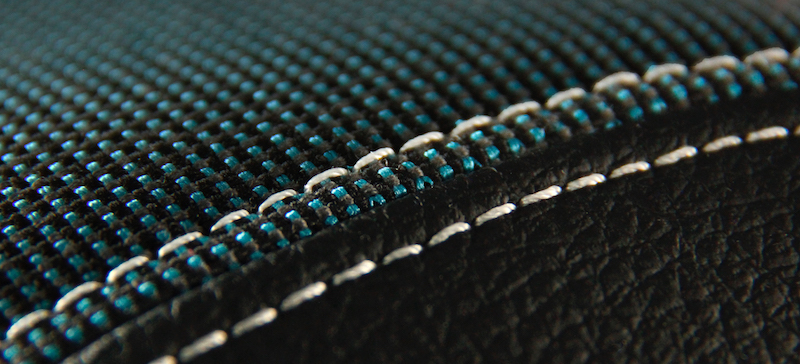
Bringing in Lectra’s expertise, suppliers are finding more ways to streamline their production of fabric and trim for automotive seating
 Mature and dynamic, Mexico is an especially attractive location for companies aiming to establish or maintain a North American manufacturing footprint. Drawn by the appeal of Mexico’s low wages and improved logistics, OEMs have built numerous dedicated sites for the assembly of vehicles, attracting suppliers from across the globe. Today, more than 30 automotive engineering and design centres and close to 1,200 suppliers are based there, with new waves of investment announced in the first half of 2016 for near-term development.
Mature and dynamic, Mexico is an especially attractive location for companies aiming to establish or maintain a North American manufacturing footprint. Drawn by the appeal of Mexico’s low wages and improved logistics, OEMs have built numerous dedicated sites for the assembly of vehicles, attracting suppliers from across the globe. Today, more than 30 automotive engineering and design centres and close to 1,200 suppliers are based there, with new waves of investment announced in the first half of 2016 for near-term development.
Although low-cost country sourcing was the initial draw for many OEMs, driving this sustained growth are the 15 international trade agreements the country has signed with 45 countries across three continents. The majority of production is shipped to North American Free Trade Agreement partners – the US and Canada. This may change, however, as Mexico becomes an increasingly attractive platform to produce vehicles for worldwide markets. This is because favourable trade terms give exporters from Mexico duty-free access to a market potential of more than 1bn consumers and 60% of world GDP.
Automotive industry investments and production forecasts for new manufacturing plants would appear to indicate that by 2020, Mexico is likely to become the sixth largest manufacturer globally, and number two after Germany, in terms of exports.
Opportunities continue to abound for automotive suppliers – the key to capturing business will be to align with the OEMs’ evolving needs.
Hidden opportunities for business growthGiven both the volatility of consumer preference and the uncertain success of new vehicle models, production flexibility and agility have become an absolute necessity in addition to cost competitiveness for successful contract negotiation between OEMs and their suppliers. This is all the more evident given that investment decisions impacting production facilities and vehicle programmes occur several years in advance. Industry-wide, the ongoing shift to standardisation of vehicle platforms stands in stark contrast to the increasing degree of personalisation offered for vehicle interiors. Car seats and interiors have become a key differentiator among brands, and are now offered with multiple options, from seating materials to colour schemes and styling.
This opportunity for business growth can also become a liability, however, if suppliers cannot improve their operational performance to keep prices low. A balance must therefore be struck between a level of standardisation enabling cost reduction and small production volumes enabling an unlimited degree of personalisation. By consequence, vehicle interior supply chains require even greater degree of agility than in the past. To conform to OEMs’ strategy of globalisation, innovation and cost reduction, many suppliers focus on upgrading their installed base of equipment. Although adding equipment is one way to increase capacity, enhancing the performance of the existing installed base offers further potential for improvement. It is this hidden capacity which holds the key to lead time optimisation and growth perspectives.

Dan Wilson, automotive sales director at Lectra North America, points out that beyond the strategy of organically growing their production asset base, automotive components producers have a tremendous opportunity to optimise the performance of their existing assets to gain more capacity and efficiency. “We often work with customers who are planning their capital expenditure needs based on assets or processes that are not optimised,” observes Wilson.
“In a recent case, our professional services team applied lean manufacturing methodology to analyse a customer’s maintenance practices, material flow and operator activity. We combined this with a parallel effort to reduce material consumption, and the resulting improvements in OEE and material efficiency resulted in a 5% cost reduction, as well as corresponding capacity increases for the customer.”Reassessing performance in the cutting value chainOne area that is often overlooked in the quest for efficiency is the cutting room. Vehicle seat and interior suppliers seeking to improve production capacity and reduce operational costs mainly focus on sewing and assembly processes, when in fact significant improvements can also be made upstream in the cutting value chain to reduce material consumption, improve production quality and increase capacity. To help customers run high-performance operations, cutting room experts with extensive expertise in the automotive industry can carry out in-depth evaluations of overall equipment effectiveness (OEE) and material efficiency, pinpointing areas for improvement leading to a lower overall cost for car seat sets.
The key to developing a competitive advantage lies in implementing the right processes to improve KPIs. Armando Rodriguez, automotive business developer at Lectra North America, recalls a customer who sought to reduce production costs but failed to do so due to mismeasured KPIs, resulting in an incorrect analysis of the root causes of high running costs. “Evaluating the production asset’s baseline performance using the customer’s indicators produced a false overall score suggesting little room for improvement,” states Rodriguez.
 Lectra experts help unlock potential of the installed base of cutting assets
Lectra experts help unlock potential of the installed base of cutting assets“By first reassessing machine availability, performance and quality, incremental improvements could be made to increase production capacity. After that, we focused on improving material efficiency to raise the overall scores.”
A holistic approach to improving the efficiency of all cutting room processes makes it possible to ensure that both existing equipment and customer organisational processes perform at the optimal level. For example, to achieve better flexibility and reduce lead time, flow efficiency can be reassessed, from raw material reception to cut component shipment and sewing lines.
“Value stream mapping offers one way to optimise material flow and reduce lead times by identifying and eliminating non-value-added activities,” adds Rodriguez. “With this kind of lean manufacturing approach, machine utilisation can be improved by up to 40%.”
A project-oriented approach designed to achieve operational excellenceWorking in project mode, cutting room experts can identify non-value-added activities and recommend the best ways to optimise processes, achieving sustainable improvement. By identifying ways to streamline processes, waste can be reduced along the entire value chain, from costing through to cutting. Special focus on computer-aided design (CAD) and nesting practices can furthermore improve nesting efficiency and reduce all design phase-related costs while expediting time to delivery.
In order for this kind of initiative to succeed, however, all stakeholders need to become involved and made aware of the potential for improvement. Once the root causes of inefficiencies have been identified, they can be remedied by all those involved in the process. By addressing strategic operational and technological issues with the aim of achieving operational excellence, cutting room experts can help automotive suppliers achieve dramatic results.
With the guidance of a noted authority on cutting room processes, leading automotive seating supplier Tachi-S succeeded in improving material consumption and work flow to stay apace of steadily growing demand. “In addition to a reduction in cost per set, this project has helped us improve the quality of our products and delivery times in the development of new platforms required by our customers,” remarks Luis Soria, senior corporate purchasing manager for Tachi-S Mexico.
By turning to outside expertise for help, suppliers can uncover performance potential and material savings they were previously unaware of, opening the way to overall performance optimisation and continuous improvement. As competition for new business intensifies, these ongoing measures will become increasingly important to suppliers, in order to continue remain attractive to the OEMs.





































